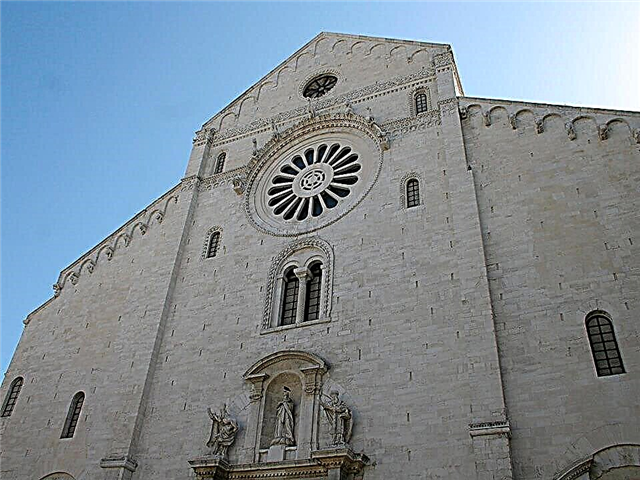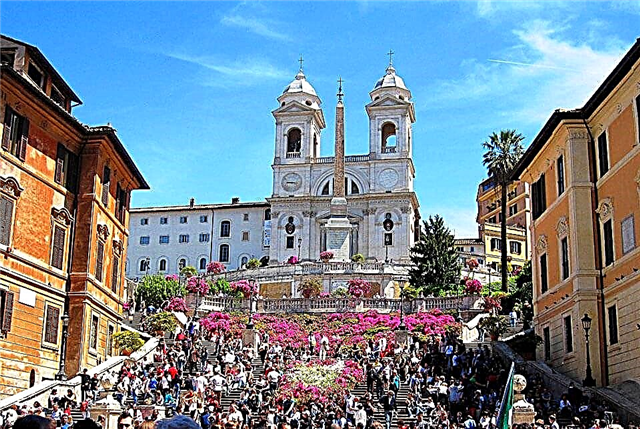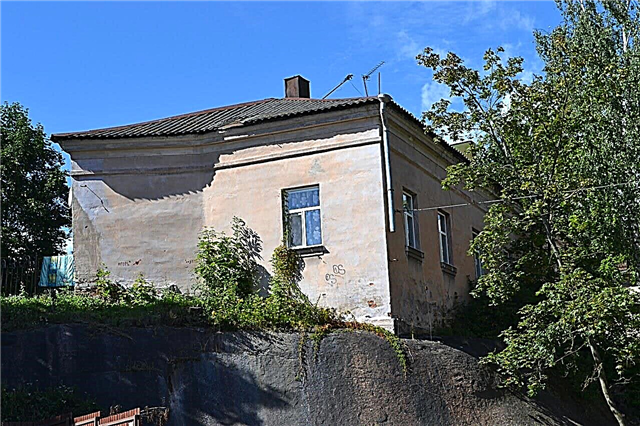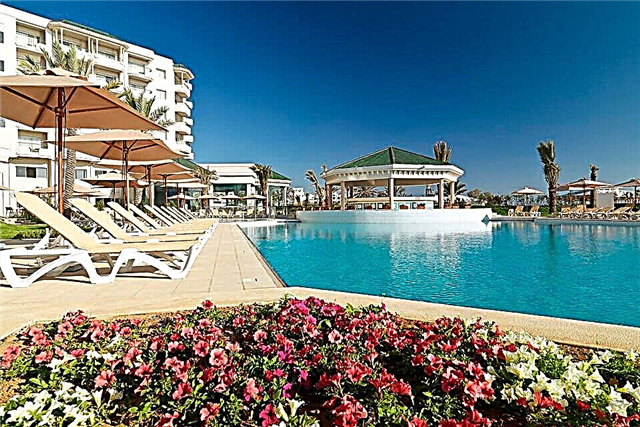Half of Tanzania's territory is covered by national parks. More than 100 nature reserves and reserves work to preserve the natural diversity of this part of Africa. Tourists from all over the world come to Tanzania to take part in an exciting photo safari, sunbathe on the beaches of Zanzibar, visit Bushmen settlements or climb the highest African mountain Kilimanjaro.
Exotic Tanzania consistently ranks first in various tourism ratings. The hot tropical climate, the opportunity to observe amazing and rare animals, attracts sophisticated and experienced travelers who come here for vivid impressions. The most popular are combined tours, when a beach vacation and active trips around the country are combined in one trip.

The best hotels and hotels at affordable prices.
from 500 rubles / day
What to see in Tanzania?
The most interesting and beautiful places, photos and a short description.
Kilimanjaro
The highest volcano mountain on the African continent. The majestic Kilimanjaro stands on the Masai plateau, the mountain reaches a height of 5895 meters. Translated from the local Swahili dialect, the name means "sparkling mountain". Climbing to the top, "conquering Kilimanjaro" or simply organized (or independent) hiking in the picturesque surroundings are popular among the numerous tourists.

Dar es Salaam city
The largest and richest city in Tanzania, a major and important port. The metropolis is located on the coast of the Indian Ocean, it is home to several million people. Dar es Salaam arose on the site of the fishing village of Mzizima thanks to Sultan Majid ibn Said in the 19th century. The ruler was so impressed by this place that he decided to build a city and named it “the house of peace” (this is what the translation from Arabic sounds like).

Zanzibar Island
Zanzibar (formerly the island was called Unguja) can be considered as a "state within a state", since it is an autonomous territory within Tanzania. The island is located in the Indian Ocean. Due to the comfortable temperature, rich excursion program, excellent tourist infrastructure, travelers often choose it as a vacation spot. There are many great beaches and comfortable hotels offering world-class service to guests.

Stone Town Anglican Church
This temple today is an iconic landmark in the capital of Zanzibar, Stone Town. The church was erected in 1887 using several architectural styles. Here, traditional Arabic town-planning techniques are mixed with Gothic elements. Inside the temple, there is a wooden crucifix dedicated to Livingstone, an outstanding British explorer of Africa, a famous scientist.

House of Wonders in Stone Town
The building is a palace built in 1883. Until the middle of the 20th century, it served as the Sultan's residence. The name "House of Miracles" can be easily explained - it was here that for the first time in the whole country electricity, running water, and an elevator were installed. These benefits of civilization for the locals were at first a "miracle". There is a museum in several rooms of the palace, where you can see old British cars.

Stone city
The old part of the city of Zanzibar, the capital of the island of the same name. Until the beginning of European colonization, it was the center of trade between the coasts of Africa and Asia. Under the ruler Said ibn Sultan from 1840 to 1956. the capital of the so-called Oman Empire was located here. The Stone City is an interweaving of narrow streets, where even a small car cannot pass, mosques, bazaars and houses with wooden verandas.

Livingston House
Quite a nondescript 3-storey building in Zanzibar, from where explorer David Livingston went on his last expedition. The building was erected in 1860, after the death of the scientist, it was used by the local Hindu community. Later, the government bought the house and renovated it. Now there is a tourist office that organizes various excursions for travelers.

Mangapwani Caves
Located in Zanzibar. The large cave is a natural formation in a limestone rock, inside it is a deep lake. A smaller cave - a cramped "stone bag" cut by a man. In Mangapwani, after the official abolition of the slave trade, slaves were secretly kept. From here, slaves were taken to India and Arab countries. In the large cave, the "live goods" were taken away, and in the small cave they were kept in terrible conditions.

Volcano Meru
The second largest (after Kilimanjaro) volcano in Tanzania. The last eruption took place in 1877, after which Meru no longer showed signs of activity. The mountain has two peaks: Big Meru with a height of more than 4.5 thousand meters and Small Meru - more than 3.8 thousand meters. The volcano is located on the territory of the Arusha National Park, entrance is allowed there only with special permits.

Ol-Doinyo-Lengai volcano
Translated from the dialect of the local Masai tribe, the name means "Mountain of God". The volcano reaches a height of 2962 meters, it is one of the most active on the African continent. During the eruption, "cold" lava of unusual black color is thrown onto the surface, which quickly solidifies and forms bizarre shapes. The volcano is located in the Arusha National Park.

Olduvai Gorge
An area in northern Tanzania, part of the Ngorongoro Protected Area. Olduvai stretches for 40 km in length, the total area of the gorge is 250 km². Many important archaeological discoveries were made here: the remains of the ancient man Homo habilis, which are more than 2 million years old, were found, the skull of Australopithecus, the remains of primitive tools of labor and hunting. In the gorge there is the OlduvaiGoj Museum, dedicated to anthropology and human evolution.

Serengeti National Park
A large and well-known world nature reserve with an area of 14,763 km². The Serengeti occupies the natural territory of the Great African Rift. The reserve was established in 1929. Since then, its territory has been constantly expanding. In 1981, it was recognized as a natural heritage site by UNESCO and came under the protection of this organization. The nature and ecosystem of the Serengeti is considered one of the oldest on the planet.

Ngorongoro Game Reserve (crater)
This crater was formed about 2.5 million years ago as a result of the destruction of a huge volcano. Its edges rise above sea level by 3 km, and the bottom by 2 km. The area is about 20 thousand hectares, the diameter of the crater itself is about 19 km. Now the area is a fenced in a circle savanna plain, where almost 25 thousand species of animals live. Most of them are predators.

Ruaha National Park
The Ruaha is Tanzania's second largest national park. Due to its isolation, the virgin nature has been preserved in the area, almost unchanged. The landscapes of Ruahi are not like other reserves, so the reserve has become an attractive tourist destination. The park was created in 1964. It ranks first in terms of the size of the elephant population - about 8000 thousand individuals of this huge animal live here.

Jozani Forest
A natural area of 44 km², where the red-brown colobus, a rare species of monkeys, have been preserved. These animals are listed in the Red Book and nowadays live only on the territory of Jozani. The body size of a colobus is only 45-70 cm, and the length of the tail is about 90 cm. Monkeys are peaceful, have long been accustomed to tourists and are happy to make contact. Dozens of species of endemic animals and birds also live here.

Lake Tanganyika
The reservoir is considered one of the longest freshwater lakes on the planet (almost 40 km longer than Baikal). The maximum depth is almost 1.5 km, the average width is 72 km. Tanganyika has a large supply of fresh water. Only one coast is located in Tanzania, the rest belong to Burundi, Zambia, and the Republic of Congo. Due to the peculiarities of the composition of water at a depth of more than 200 meters, there is almost no life.

Lake Malawi
It is the third largest in Africa and the ninth largest in the world. The length reaches 560 km., The width is 80 km., The average depth is about 700 m. Malawi is distinguished by a wide variety of fish, according to various studies, their number reaches almost 1000 species. Crocodiles and whooper eagles also live here. The lake is a popular fishing spot; all the surrounding settlements are provided with local fish.

Lake Natron
Quite an unusual and picturesque place located in the area of the Great Rift Fault. The water in the lake has shades from blood red to deep orange thanks to the microorganisms living in it. Chemical fumes scare away predators, so many small animals settle on the banks. After death, their bodies turn into mummies due to special chemical processes in the area of the lake.

Lake Manyara
A body of water that has become home to a huge number of magnificent pink flamingos. The population of these birds is so large that a dense pink spot above the water surface can be seen from afar. Also, the waters of Manyar are home to over 400 species of other birds, most of which are not found elsewhere. Here you can find hornbill, marabou, stork, pelican, ibis, crane and cormorant.

Lake Victoria
Victoria is one of the seven African Great Lakes. It covers an area of 68.8 thousand km². More than 30 million people live in the coastal strip of the reservoir and several densely populated cities with a population of one million have been built. The equator border passes through the lake. Industrial shipping is developed here, ferry communication between countries, the energy of water is actively used to provide cities and settlements.












